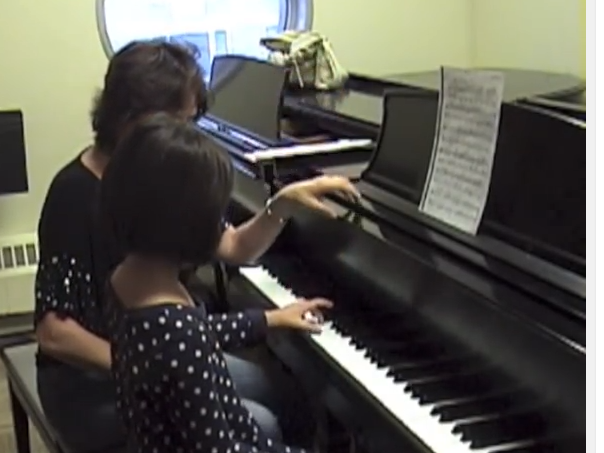I recall my early childhood in the East Bronx on Featherbed Lane. At age 2 or 3, I was exposed to music emanating from a victrola perched on a corner table in a small two-room flat. From sunrise to sunset, heart-throbbing violin concertos, interspersed with operatic solos of Puccini played endlessly. My mother, standing by the ironing board, with a pile of freshly dried clothes that were line-dried on the roof beside a fleet of message bound pigeons, squeaked out arias as tears rolled down her cheeks. Such a poignant emotional response to music was deeply embedded by her Russian parents and grandparents who sang bits and pieces of operatic solos, along with Yiddish folkloric melodies.
To confirm a music gene of sorts that complemented the environmental nurturance of a musician-to-be, I was told that my maternal grandmother’s maiden name was Musikant. Yet I had no reference to a specific relative who made his living playing a musical instrument. All I knew was that the violin had been embraced in my family as the living, breathing expression of full blown emotion, beside the human voice.
When I think of my pianistic idol, Murray Perahia, his earliest exposure to music was through the opera. His father took him as a toddler to the Met every week, and when the child returned home, he would sing parts of arias by memory. Similarly, I was astonished when I heard a crawling 8-month old, intoning the opening measures of Bach’s C minor concerto for Oboe and Violin, BWV 1060. His father was an oboist and member of a well-known symphony orchestra. His chamber ensemble had been rehearsing the Bach work over days and weeks as the baby meandered between music stands.
Countless musicians hearken back to their earliest childhood years that were permeated by the sounds of beautiful music. The genres could have been diverse: folk, jazz, Classical, but the performances and performers offered a level of music-making that was riveting and made a profound and memorable emotional impression. (Seymour Bernstein refers to his early discovery of a Standchen recording that brought him to tears)
In the universe of phrasing, the impact of these early musical exposures is significant, because a LANGUAGE is passed down that becomes the basis of a primordial “feeling” about music, its contour and shape as one grows and develops.
***
As I grew older, my mother took me to Carnegie Hall, Town Hall, the Museum of the City of New York to hear Sviatoslav Richter, Vladimir Ashkenazi, Emil Gilels, Vladimir Horowitz, Rosalyn Tureck, Daniil Shafran (cellist), Nathan Milstein, violinist, while an updated living room hi-fi system in the Marble Hill Projects of the Bronx, delivered 33 LPs recordings of Arthur Rubinstein, Oscar Levant (Chopin? where did they get that one?), Perry Como singing Kol Nidre; Zino Francescatti rendering the Mendelssohn violin concerto; Michael Rabin playing Paganini 1 beside Oistrakh’s Beethoven Op. 61, and Leonid Kogan’s Tchaikovsky D Major Concerto: (the second movement was a well of sadness and catharsis) Meanwhile my brother blasted Rimsky-Korsakov’s Easter Overture and Cesar Franck’s Symphony in D minor, increasing interest on my musical memory deposits.
All of the above puts EXPOSURE center stage in feeding musical study. And since many pupils come to the piano without an early embedded language of music, they must make up for lost time through various directed opportunities.
Since I work primarily with adults, I recommend that they saturate themselves with the best performances they can access, whether LIVE (preferred), on you tube, by CD, etc. and in favorable acoustical environments. Mp3s fall short. Same for iPhone delivered transmissions of the masterworks which sound like they’re coming from a tin can.
About Modeling
Last week I found myself, at my student’s request, sitting at my grand piano, giving an overview of the sonata she was studying. This followed her rendering that I had interspersed with comments and small segment demonstrations/analyses. Still, she requested and needed a lingering musical impression that was the equivalent of a language exchange.
My most treasured teacher, Lillian Freundlich, communicated by singing. She sang over my playing, guided and shaped phrases, though she didn’t displace me at the piano bench to demonstrate the interpretation of a composition. Instead she taught a physical/musical approach that emphasized relaxation, supple wrist, bigger funnels of energy down the arm, that she would channel by guiding my arm/hands. (I was 13 at the time, having my first encounter with the physical dimension of playing that allowed my well-embedded imagination to roam free.)
In retrospect, the physical dimension of playing should have occurred earlier, as artfully illustrated in the video below: (another form of “exposure”)
***
No to be redundant, but exposure to beautiful phrasing can indeed be nurtured along at lessons without fearing the universal taboo that a student will not develop his/her own personal rendering or style if unduly influenced by the teacher. Same applies to recordings and LIVE performances. They are, to the contrary, a repository of enrichment that in many cases may not have been available in the formative years, so better late than never resonates to crescendo levels.
from Arioso7's Blog (Shirley Kirsten)
https://arioso7.wordpress.com/2015/07/18/early-musical-exposure-and-its-importance/


No comments:
Post a Comment